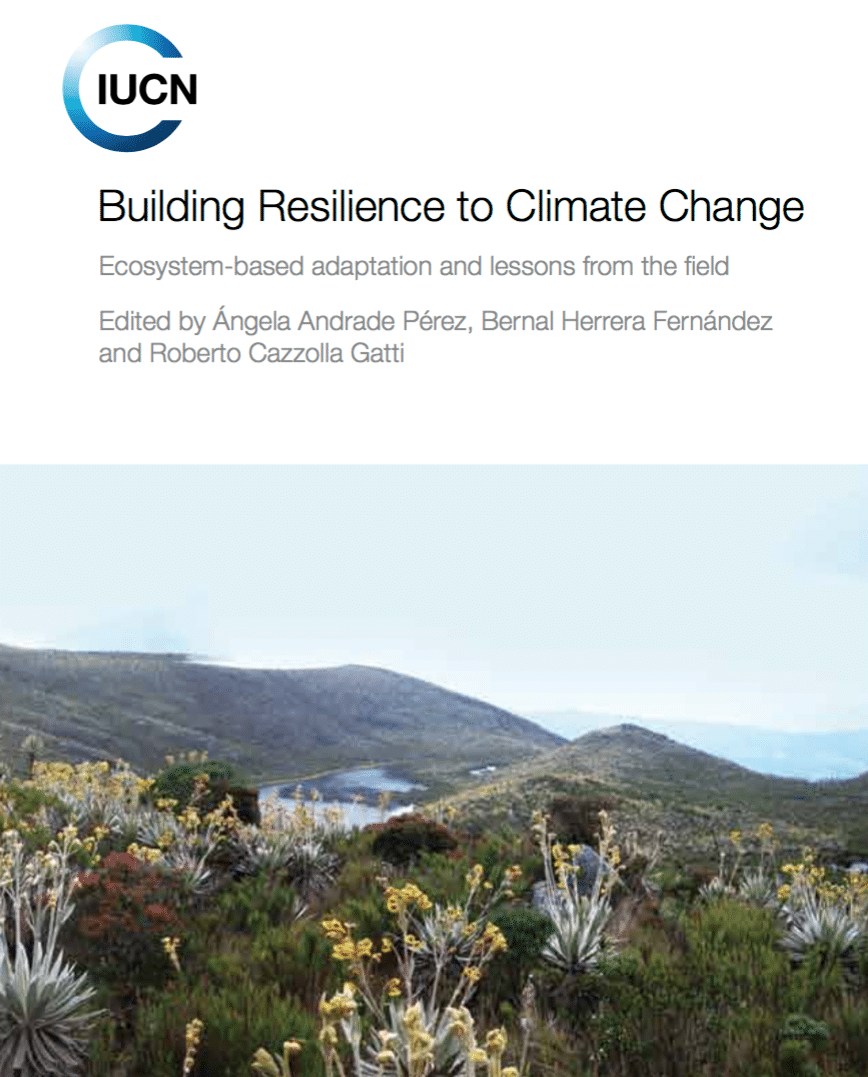Nature-based Solutions (NbS) are defined by the IUCN (International Union for the Conservation of Nature) as “actions to protect, sustainably manage, and restore natural or modified ecosystems, that address societal challenges effectively and adaptively, simultaneously providing human well-being and biodiversity benefits”.
As the leading organisation for the research and promotion of NbS, IUCN has published many relevant reports and journals, providing researchers and policy makers with their expert guidance and suggestions. A recent article from IUCN China’s WeChat account lists five publications that you must not miss:

2010: Building Resilience to Climate Change: Ecosystem-Based Adaptation and Lessons from the Field
With climate change now a certainty, the question is how much change there will be and what can be done about it. One of the answers is through adaptation. Many of the lessons that are being learned in adaptation are from success stories from the field. This publication contains eleven case studies covering different ecosystems and regions around the world. Its aim is to summarise some current applications of the Ecosystem-based Adaptation (EbA) concept and its tools used around the world, and also draw lessons from experiences in conservation adaptation.

With the recent transformation of its political and social system, Nepal is suffering from low productivity and consumer demand. While the national production and consumption patterns are destroying nature and natural resources at persistent and dangerously high rates, the livelihoods and food safety of the Nepalese are also threatened by the degraded ecosystem. This report introduces the IUCN Nepal Program Framework 2013-2016, that aims to support and mobilise communities working for sustainable development in common efforts to halt the loss of biodiversity and ecosystem services and apply nature-based solutions to reduce poverty, conserve biodiversity and ecosystems, enhance resilience, strengthen equity and improve the wellbeing of the people in Nepal.

The objective of this report is to systematically document and glean learning from the rich knowledge being generated through IUCN’s 45 Ecosystem-Based Adaptation Projects in 58 countries. The report contains analysis of the mapping exercise and important suggestions on project operation and evaluation, with the aim that it will provide guidance to future projects.

2014: Safe Havens: Protected Areas for Disaster Risk Reduction and Climate Change Adaptation
This publication presents 18 case studies to demonstrate how Protected Areas (PAs) can be better managed for disaster risk reduction (DRR) and climate change adaptation (CCA). The chapters vary from scientific studies to good practices, as well as (existing or required) policy frameworks that enable appropriate management. The publication also highlights the importance of creating nature reserves and demonstrates how a healthy ecosystem could effectively help people to build climate resilience.

2014: Green Infrastructure Guide for Water Management
This guide introduces ecosystem-based management approaches for water-related infrastructure projects. Green Infrastructure (GI) is becoming increasingly recognised as an important opportunity to address the complex challenges of water management. The GI approach refers to the natural or semi-natural systems that provide services for water resources management with equivalent or similar benefits to conventional (built) “grey” water infrastructure. This guide addresses one of the main barriers to widespread adoption of GI solutions: a general lack of awareness of the solutions and associated cost-benefits. The illustrative case studies in this guide provide examples of GI options that address water management challenges, while delivering a number of significant co-benefits.



